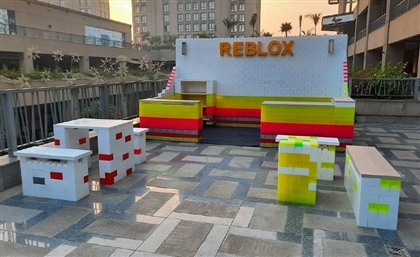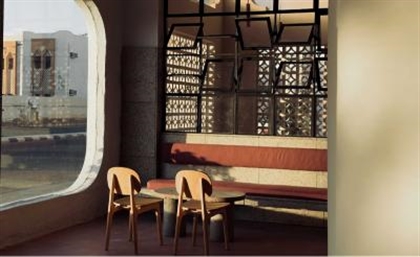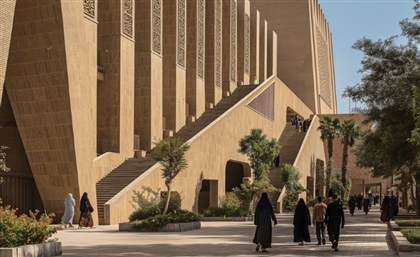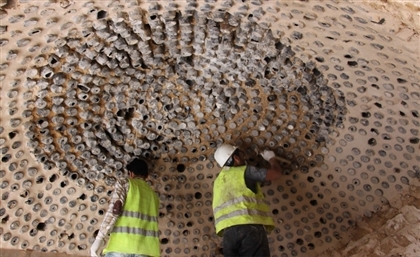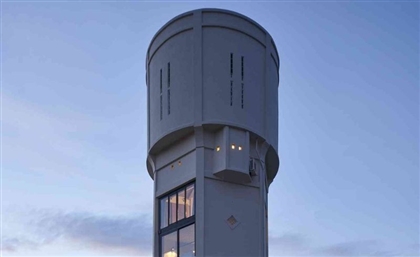Mamluk Egyptian Style in The Islamic Center of Washington DC
Designed by Egyptians, this piece of Old Cairo sits on Embassy Row district in the US Capital with a towering Mamluk minaret.
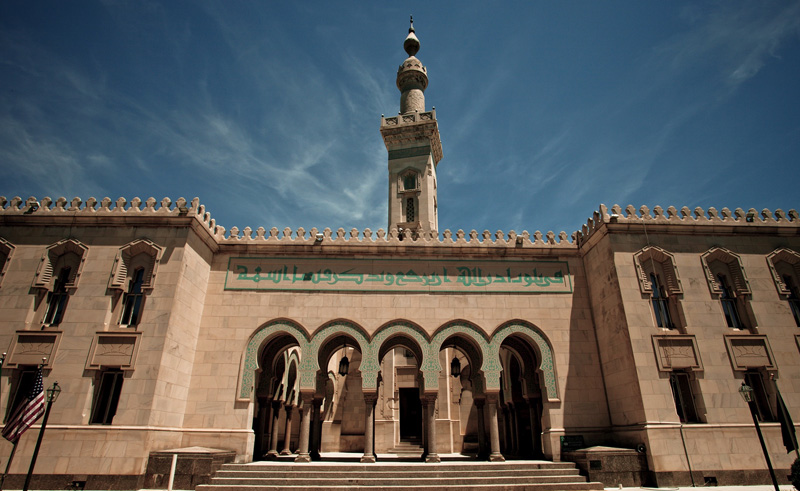
Considered one of the most magnificent religious buildings in the USA, the Islamic Center of Washington, DC was built and decorated in 1957 following a massive effort spearheaded by Kamil Abdel Rahim, Egypt’s former Ambassador to the USA, and the coming together of master artisans from across the Muslim world.
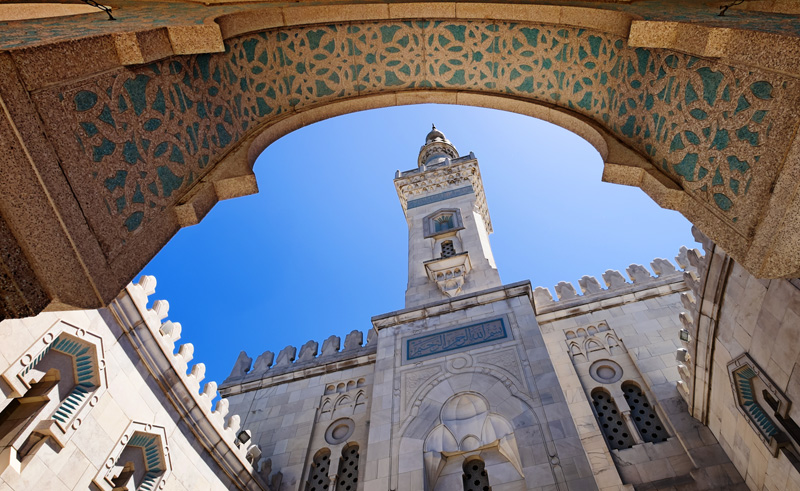 Designed by Italian-Egyptian architect Mario Rossi, the centre and its mosque follow Rossi’s ‘Neo-mamluk’ adaptation of Mamluk Egyptian style which he applied in Cairo and Alexandria during the 1940s. Meanwhile, the interior features multinational beauty. Tranches of the mosque’s walls and its mihrab are covered with bright, blue and floral ceramic tiles which anchor the space with Ottoman aesthetics. They were gifted from Turkey while the bronze chandeliers were from Egypt and the ceiling they hang from was adorned with Quranic verses handcarved by Egyptian craftsmen as the floors were concealed with Persian rugs.
Designed by Italian-Egyptian architect Mario Rossi, the centre and its mosque follow Rossi’s ‘Neo-mamluk’ adaptation of Mamluk Egyptian style which he applied in Cairo and Alexandria during the 1940s. Meanwhile, the interior features multinational beauty. Tranches of the mosque’s walls and its mihrab are covered with bright, blue and floral ceramic tiles which anchor the space with Ottoman aesthetics. They were gifted from Turkey while the bronze chandeliers were from Egypt and the ceiling they hang from was adorned with Quranic verses handcarved by Egyptian craftsmen as the floors were concealed with Persian rugs.
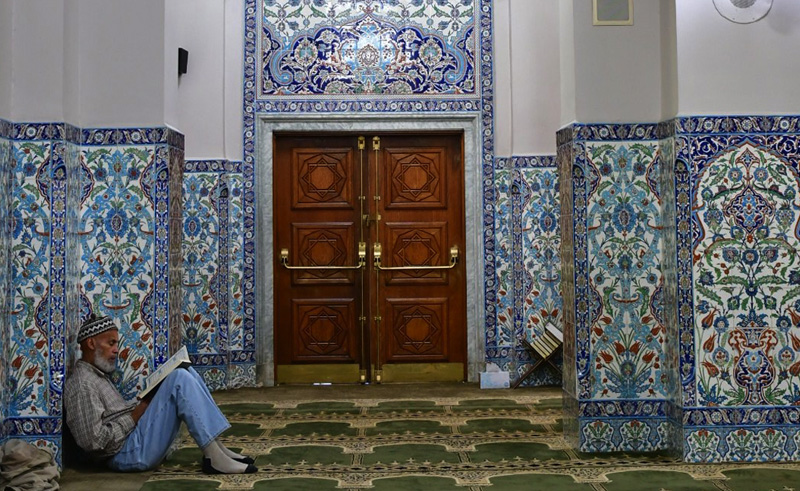 The need for the centre arose following the passing of the Turkish ambassador in 1944, as there was a lack of mosques which could host the funeral. Shortly after, diplomat and businessman Abdel Rahim was appointed as ambassador and then president of the mosque foundation, leading its assembly.
The need for the centre arose following the passing of the Turkish ambassador in 1944, as there was a lack of mosques which could host the funeral. Shortly after, diplomat and businessman Abdel Rahim was appointed as ambassador and then president of the mosque foundation, leading its assembly.
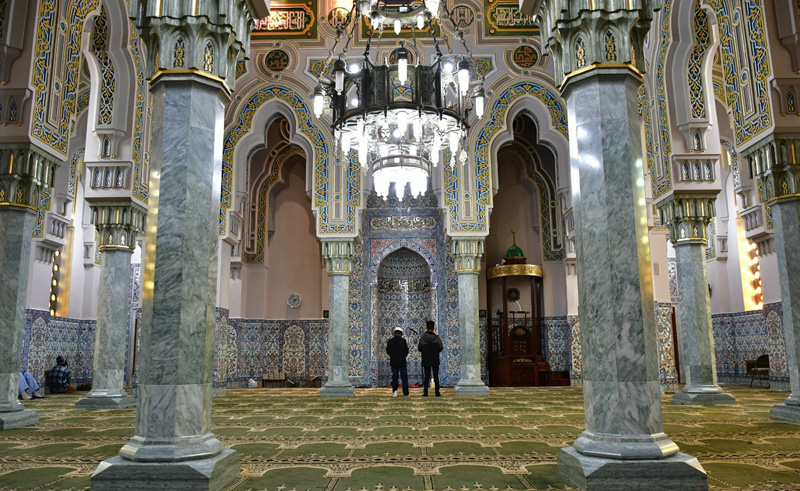 Today, flags of Islamic nations are arrayed around the building complex which is oriented towards the streets. The mosque, on the other hand, is rotated to face Mecca. Rossi’s building plan featured a three-Iwan hall encircled by a double-riwaq arcade which separates the complex from the street through five horseshoe arches.
Today, flags of Islamic nations are arrayed around the building complex which is oriented towards the streets. The mosque, on the other hand, is rotated to face Mecca. Rossi’s building plan featured a three-Iwan hall encircled by a double-riwaq arcade which separates the complex from the street through five horseshoe arches.
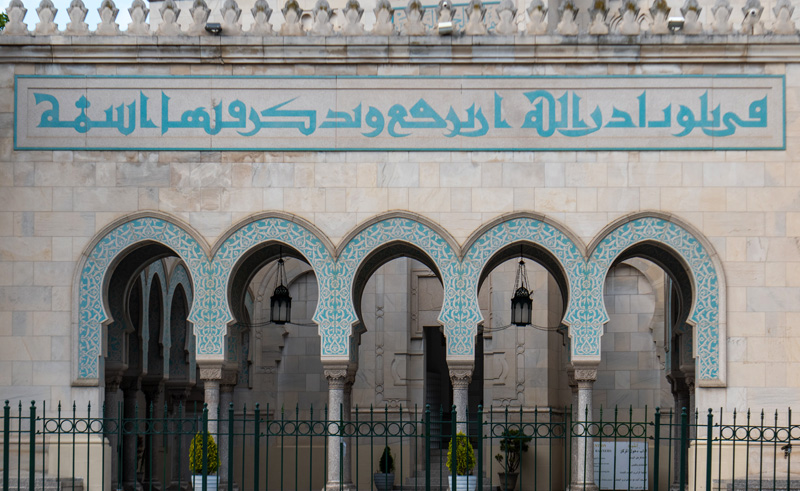 While many features common in Old Cairo’s 1001 mosques could be found in Washington, the feat wasn’t as straightforward as simply taking the blueprints of a mosque in Old Cairo and applying it to the environment of the US capital.
While many features common in Old Cairo’s 1001 mosques could be found in Washington, the feat wasn’t as straightforward as simply taking the blueprints of a mosque in Old Cairo and applying it to the environment of the US capital.
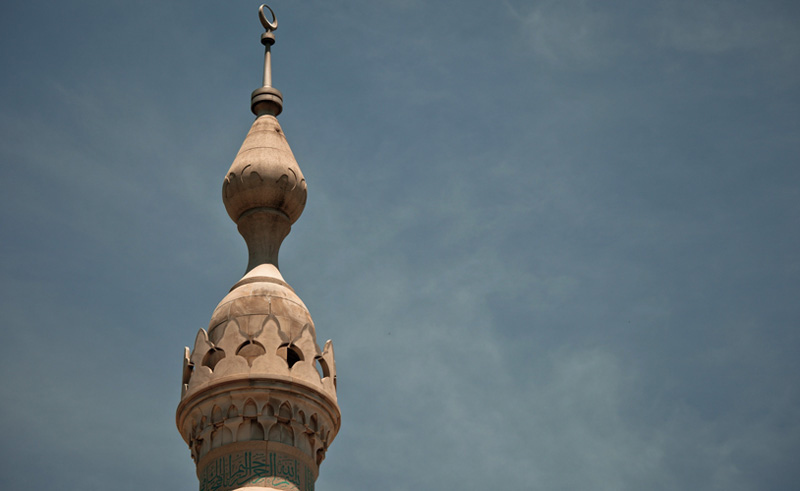 Rossi made alterations to traditional Mamluk buildings such as covering the central courtyard with a clerestory dome as opposed to the usual openness. Aside from its religious purposes, the Islamic Center caters to its neighbouring community by offering food kitchens and shelters, as well as a library and multiple classrooms.
Rossi made alterations to traditional Mamluk buildings such as covering the central courtyard with a clerestory dome as opposed to the usual openness. Aside from its religious purposes, the Islamic Center caters to its neighbouring community by offering food kitchens and shelters, as well as a library and multiple classrooms.
Photography Credit: Carol M. Highsmith, Samir Beharic, Josh Bassett
- Previous Article The Enduring Charm of Jeddah’s Old Town of Al Balad
- Next Article Hany Saad Innovations Unveils Idyllic Design for New Resort in Khobar





